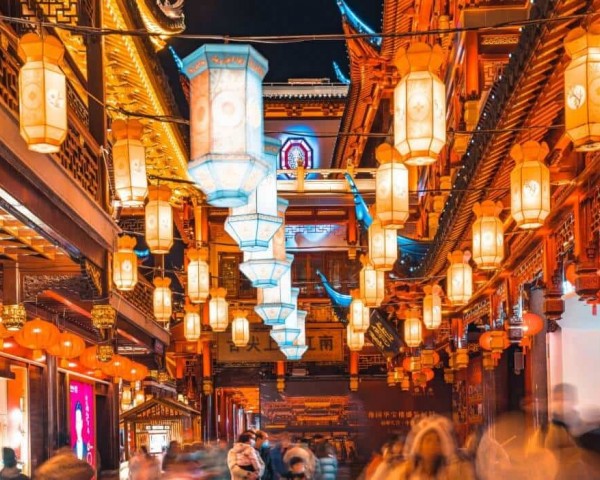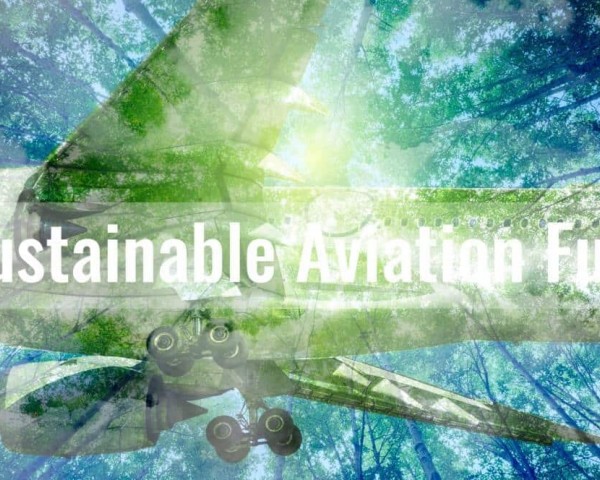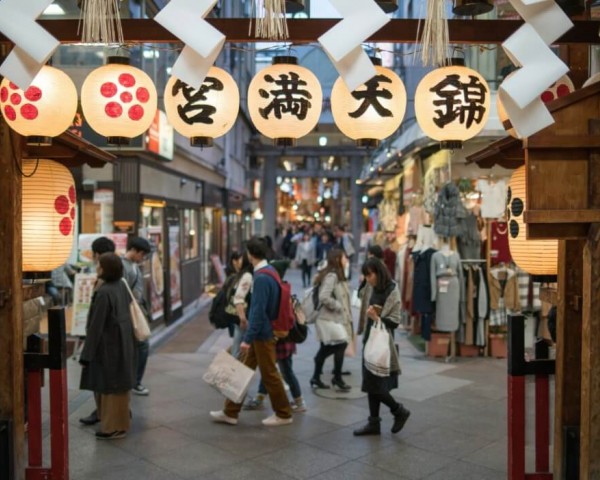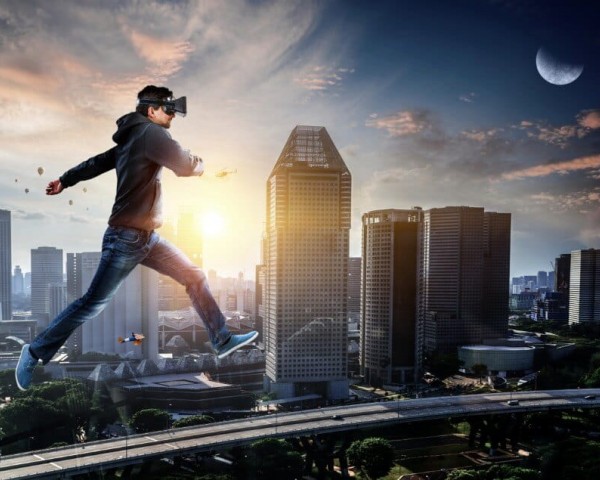The Shanghai Tourism Festival showcased its best attractions
As the gray autumn weather begins to clear the Huangpu River, Shanghai recently held its 36th Tourism Festival in spectacular fashion. It was an epic affair, lasting 93 days and transitioning nicely from the summer months into a culturally rich experience. The festival, under the title of “Embracing Beauty and Happiness”, officially ended on October 7, 2025 at Shanghai Exhibition Cultural Park. About 97 million tourists visited the city this season, spending about 152.4 billion yuan (about $21.4 billion). This is a truly remarkable jump of nearly 27% over last year!
The Shanghai Tourism Festival tried something new with the “one part and two seasons” approach, combining summer tourism with other traditional activities. They have held more than 500 events, and combined them with major events such as the Shanghai Summer International Consumption Season to make the city a true cultural tourism hub. This success not only broke a number of records, but also showed that Shanghai is still the top destination in China for international tourists.
Burnout: Policies, Places, and Leading Experiences
The central idea of the festival was really about promoting both supply and demand, so it focused on “optimizing supply, enabling consumption”. It brought together different policy interests, regional cooperation, and some new ideas to make it happen. For Example, From September 13 to 19, 63 popular attractions—think Legoland Shanghai and the Oriental Pearl Tower—offered half-price tickets, and that created a lot of excitement. Ctrip noted that they saw an increase of about 51.04% in ticket bookings and an increase of about 54.43% in spending, and hotel stays also increased by about 27.59% compared to last year. Similarly, Qunar data showed a good increase. They found that between July and September, hotel occupancy in key areas rose by around 22%, with a 17.69% growth in room sales.
Big online platforms like Ctrip and Meituan mixed shopping, festivals, and general engagement into easy experiences, and they added personal things like “Aigou Shanghai Tourism Festival”. This promotion recorded more than 18 billion network impressions and really helped create the cycle of online and in-person spending. Looking at the different areas, things are doing really well: Legoland opened in the summer to coincide with the start of the festival, and it ended up welcoming 600,000 visitors, sometimes up to 15,000 per day. Hotels in this area saw occupancy rates exceeding 90%. In addition, Jinan also hosted the International Tea Culture Festival, Qingpu hosted the International Swimming Championships, and Songjiang hosted the Mother-Child Tourism Week. These events bring different types of visitors, and Shanghai has ended up being the most popular destination for summer tourism in Duan. Also, merchants who participate in “Lohas Shanghai” have seen their sales increase by nearly 31% per month.
New attractions added more to the city: things like “Farewell Blue and White”, which was an amazing VR experience, and the virtual tour of the Prado Museum offered people interesting ways to explore the city. And urban areas—the Jiading Nanxiang National Summer Conference, Jinshan Fengjing Watertown’s wedding ceremony and the light and shadow fireworks of Deshui Lake—brought city dwellers outdoors. This spread spending geographically and generally boosted the economy of urban areas.
Expanding Access: Parades, Partnerships, and People’s Stories
The festival relies on “extraordinary activities + communication products + national communication” to promote Shanghai. A major highlight was the Band Parade. The multi-cultural show on September 13 featured 25 floats and 24 performance groups against the backdrop of the city’s skyline. There were more than 23,000 mentions of it in the news media, and the content received nearly 100 million views across short video platforms and images. Later, the parade floats traveled more than 1,000 kilometers in 11 key areas of the city, bringing 3.4 million “float followers” to watch. From September 29 to October 6, floats were also displayed at the Pudong International Expo Cultural Park. The exhibition is coordinated with the World Expo Floral Art Festival and features a final display of floats amidst floral arrangements. The Jay Chou-themed float was particularly well received.
Five other places across the country have held events similar to the original festival: Miyangyang in Sichuan hosted the Shenhai Lake Drama Festival and Shigatsi in Tibet hosted the Intangible Cultural Heritage Festival. These events created some synergy. And, the Red Cross has also fostered regional partnerships with initiatives such as the “China White Goddess Porcelain” exhibit and the return of the “Why Don Huang” exhibit. The Yangtze River Delta has found a voice through the “Living Room of Cultural Tourism” high-speed rail initiatives and romantic rose-themed wedding packages that connect Shanghai with Jiangsu Province, all enhanced by a cultural festival.
Each day’s vision helped shape the direction of the festival. The “Tourism Festival in My Heart” campaign drew huge numbers, further bolstered by celebrity endorsements, such as Tang Yan. Sixteen leaders from international groups have become “Shanghai Entry Observers”, communicating the passion of the city through their international social media networks. The memorable “This is Shanghai” slogan and associated promotional videos, featuring both Chinese and international “city presenters”, aim to present the architecture of this city as “readable”, effectively spreading its narratives around the world.
Enhancing Experiences: Art, Exploration, and Tech Touch
The key objective of the festival was to transform existing urban resources into interesting and accessible experiences, leveraging improved and user-friendly services. Cultural experiences have been rebranded as “art tours,” such as Hong Kong’s “Enjoy the North Bund” rooftop concert series, Jingan’s “Fashion Performing Arts Week” offering more than 100 free events, and Fengxian’s “Performing Arts Life Festival” featuring more than 10 ensemble activities. “Music City Without Borders.” High-profile museum events such as the “Treasures of the Other World” and “Hangshan Ancient Civilization” exhibitions at the Pudong Art Museum have attracted public attention, indicating that “one exhibition, one city” can have a magical effect.
The growth of the “check-in economy” has been driven by travel attractions. For example, Hong Kong’s “Hong Kong is a Museum” uses augmented reality to bring history to life, and Zhuhui’s western waterfront connects more than ten art sites. Poto’s “Waterfront Amusement Park” highlighted various harbors along the Suzhou River. The “City Players Enjoy Shanghai” campaign, which highlighted 100 sites in 16 districts, included photography contests aimed at encouraging deeper “reading of the city.”
Technology is strategically integrated into the festival experience, facilitating navigation and access. A one-stop application to manage inquiries, provide booking capabilities, and facilitate public transit information. Natural discounts (up to 60%) through Didi and the public voting period added an element of fun. The “High Travel” Shanghai Pass, useful in 330 cities in China, and the “Shanghai Travel Guide” designed for international visitors, organize travel logistics for both domestic and international tourists.
The “Tourism +” philosophy moved beyond the traditional “ticket economy” approach towards a broader industrial model. For example, collaboration with the International Festival of Light and Shadows resulted in night tours, and collaboration with the China Shanghai International Art Festival created tourism and art themed activities. Baoshan International Cruise Festival has cooperated with nine other cities to develop “Cruise + Consumer” initiatives and “Cruise + Jiangnan Ancient City” tourism route. The growth of ancient towns has been promoted through festival-driven events such as the Zhou Jiajiao Intangible Heritage Season and the Jinxi Rural Tourism Festival.
According to Zhong Xiaomen, who directs the Shanghai Municipal Culture and Tourism Administration, The festival offers a way for the city to express its spirit and bring local stories to an international audience. As memories of the celebration fade, the Shanghai Tourism Festival reinforces its position as a world-class destination, combining tradition with a forward-thinking vision and inviting visitors to share in the beauty and joy of the city.




Post Comment